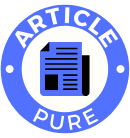In the world of digital marketing, it’s essential to explore every avenue to reach your target audience effectively. While Google Ads might be the first platform that comes to mind, don’t overlook the potential of Bing Ads. With its growing user base and unique features, Bing Ads can be a valuable addition to your online advertising strategy. In this comprehensive guide, we will delve into the world of Bing Ads, exploring what they are, why they matter, how to get started, and advanced strategies to maximise your return on investment (ROI).
Understanding Bing Ads
What Are Bing Ads?
Bing Ads, now known as Microsoft Advertising, is Microsoft’s advertising platform that allows advertisers to display ads on Bing search results pages, Yahoo, and other partner networks. It operates on a pay-per-click (PPC) model, where advertisers bid on keywords to have their ads displayed to users searching for those keywords.
Why Bing Ads Matter
- Bing’s User Base: While Google dominates the search engine market, Bing still captures a significant share of users. According to Microsoft, Bing reaches over 126 million unique desktop searchers in the United States alone. This user base represents a valuable demographic that might not be exclusively using Google.
- Less Competition: Bing Ads often have less competition compared to Google Ads. This can result in lower costs per click (CPC) and higher ad visibility for your campaigns.
- Bing-Yahoo Alliance: Bing Ads powers Yahoo’s search advertising, which means that your ads can reach users on both Bing and Yahoo search engines, further expanding your reach.
- Demographic Differences: Bing’s user base tends to skew slightly older and more affluent, making it an ideal platform for certain products and services.
Getting Started with Bing Ads
Creating a Microsoft Advertising Account
To get started with Bing Ads, you’ll need to create an account on the Microsoft Advertising platform. Here’s how:
- Visit the Microsoft Advertising website (formerly Bing Ads).
- Click on “Sign Up Now.”
- You can either use your existing Microsoft account (e.g., Outlook, Xbox) or create a new one.
- Follow the on-screen prompts to complete the account setup.
Campaign Setup
Once your account is set up, it’s time to create your first Bing Ads campaign:
- Click on “Create a campaign” in your Microsoft Advertising dashboard.
- Choose your campaign goal, whether it’s driving traffic to your website, increasing brand awareness, or getting conversions.
- Select your campaign type, such as Search, Shopping, or Audience campaigns.
- Define your target audience, including location, demographics, and interests.
- Set your daily budget and bid strategy.
Ad Group and Keyword Selection
The success of your Bing Ads campaign hinges on choosing the right keywords and structuring your ad groups effectively:
- Create ad groups based on relevant themes or products.
- Conduct keyword research to identify high-performing keywords related to your ad groups.
- Use Bing’s Keyword Planner tool to discover new keywords and estimate their search volume.
- Add your selected keywords to your ad groups.
Crafting Compelling Ads
Your ad copy plays a crucial role in capturing the attention of potential customers:
- Write clear and concise ad headlines that include relevant keywords.
- Create compelling ad descriptions that highlight the benefits of your products or services.
- Use ad extensions to provide additional information, such as location, phone number, or site links.
Setting Up Tracking and Analytics
To measure the effectiveness of your Bing Ads campaigns and make data-driven decisions, set up tracking and analytics:
- Install Microsoft’s Universal Event Tracking (UET) on your website to track conversions.
- Use UTM parameters to track campaign performance in Google Analytics.
- Monitor your campaign’s performance in the Microsoft Advertising dashboard.
Advanced Strategies for Bing Ads Success
To truly maximise your ROI with Bing Ads, consider implementing the following advanced strategies:
Leverage Audience Targeting
Microsoft Advertising offers audience targeting options similar to Google Ads:
- Use in-market audiences to reach users who have shown specific purchase intent.
- Create custom audiences based on website interactions, similar to Google’s remarketing lists.
- Utilise LinkedIn profile targeting to reach professionals based on their job titles and industries.
Optimise for Voice Search
With the rise of voice-activated digital assistants like Cortana, optimising your Bing Ads for voice search can give you a competitive edge:
- Focus on long-tail keywords and natural language queries.
- Create ad copy that answers common voice search questions.
- Consider local optimization for “near me” voice searches.
A/B Testing
Continuously improve your ad performance through A/B testing:
- Test different ad headlines, descriptions, and call-to-action phrases.
- Experiment with various ad extensions to see which ones resonate with your audience.
- Monitor the results and make data-driven adjustments.
Device and Location Targeting
Tailor your ad campaigns based on device and location:
- Adjust bidding based on the device type (desktop, mobile, tablet) that your audience uses most.
- Fine-tune location targeting to focus on regions where your products or services perform best.
Competitive Analysis
Keep an eye on your competitors and adapt your strategies accordingly:
Analyse your competitors’ keywords and ad copy.
Identify gaps in their strategies that you can exploit.
Stay updated on industry trends and changes in your competitive landscape.
Tracking and Measuring Bing Ads ROI
To ensure that your Bing Ads campaigns are delivering a positive ROI, it’s crucial to track and measure their performance effectively:
Conversion Tracking
Set up conversion tracking in your Microsoft Advertising account to track actions that matter to your business, such as purchases, sign-ups, or lead form submissions.
Cost-Per-Conversion (CPA) Analysis
Calculate your CPA by dividing the total ad spend by the number of conversions. This metric helps you assess the cost-effectiveness of your campaigns.
Return on Ad Spend (ROAS)
ROAS measures the revenue generated for every dollar spent on advertising. Aim for a positive ROAS to ensure profitable campaigns.
Click-Through Rate (CTR)
CTR indicates the percentage of users who clicked on your ad after seeing it. A higher CTR often correlates with more relevant and engaging ads.
Quality Score
Microsoft Advertising assigns a Quality Score to your keywords and ads based on their relevance and performance. Higher Quality Scores can lead to lower CPC and better ad positioning.
Bing Ads, now known as Microsoft Advertising, offer a unique opportunity to reach a substantial and often overlooked audience. By understanding the platform, implementing best practices, and utilising advanced strategies, you can unlock the full potential of Bing Ads and maximise your ROI. Remember that success in digital marketing requires continuous monitoring, optimization, and adaptation to stay ahead of the competition. With Bing Ads in your marketing toolbox, you’ll be well-equipped to achieve your advertising goals and drive valuable results for your business.
ALSO READ: Understanding Freehold Properties and Freehold Property Law Exploring the Exciting World of Quantum Computing: The Future of Technology The Evolution of Smart Homes: Enhancing Convenience and Efficiency Supercharge Your Work Anywhere: The Ultimate Guide to Mobile Workstations





